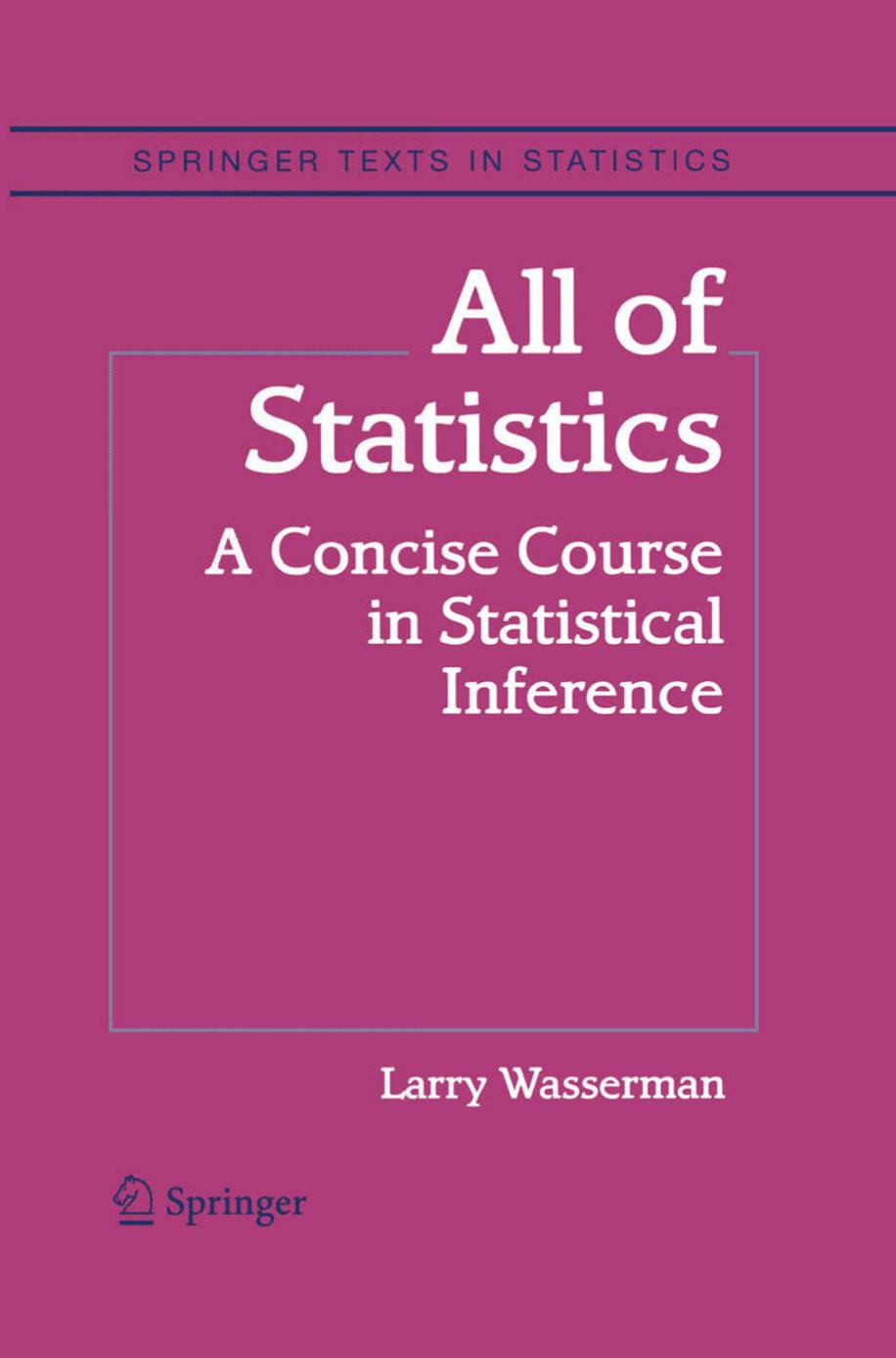All of Statistics by Larry Wasserman

Author:Larry Wasserman
Language: eng
Format: epub, pdf
Publisher: Springer-Verlag Wien 2012
Published: 2014-06-11T16:00:00+00:00
12.6 Admissibility
Minimax estimators and Bayes estimators are “good estimators” in the sense that they have small risk. It is also useful to characterize bad estimators.
12.17 Definition. An estimator is inadmissible if there exists another rule such that
Otherwise, is admissible.
12.18 Example. Let X ∼ N(θ, 1) and consider estimating θ with squared error loss. Let . We will show that is admissible. Suppose not. Then there exists a different rule with smaller risk. In particular, . Hence, . Thus, . So there is no rule that beats . Even though is admissible it is clearly a bad decision rule. ■
12.19 Theorem (Bayes Rules Are Admissible). Suppose that Θ ⊂ ℝ and that is a continuous function of θ for every Let f be a prior density with full support, meaning that, for every θ and every . Let be the Bayes’ rule. If the Bayes risk is finite then is admissible.
Proof. Suppose is inadmissible. Then there exists a better rule such that for all θ and for some θ0. Let . Since R is continuous, there is an ϵ > 0 such that for all θ ∈ (θ0 − ϵ, θ0 + ϵ). Now,
Hence, . This implies that does not minimize which contradicts the fact that is the Bayes rule. ■
12.20 Theorem. Let X1,..., Xn ∼N(μ, σ2). Under squared error loss, is admissible.
The proof of the last theorem is quite technical and is omitted but the idea is as follows: The posterior mean is admissible for any strictly positive prior. Take the prior to be N(a, b2). When b2 is very large, the posterior mean is approximately equal to .
How are minimaxity and admissibility linked? In general, a rule may be one, both, or neither. But here are some facts linking admissibility and minimaxity.
12.21 Theorem. Suppose that has constant risk and is admissible. Then it is minimax.
Proof. The risk is for some c. If were not minimax then there exists a rule such that
This would imply that is inadmissible. ■
Now we can prove a restricted version of Theorem 12.14 for squared error loss.
12.22 Theorem. Let X1,..., Xn ∼ N(θ, 1). Then, under squared error loss, is minimax.
Proof. According to Theorem 12.20, is admissible. The risk of is 1/n which is constant. The result follows from Theorem 12.21. ■
Although minimax rules are not guaranteed to be admissible they are “close to admissible.” Say that is strongly inadmissible if there exists a rule and an ϵ > 0 such that for all θ.
12.23 Theorem. If is minimax, then it is not strongly inadmissible.
Download
This site does not store any files on its server. We only index and link to content provided by other sites. Please contact the content providers to delete copyright contents if any and email us, we'll remove relevant links or contents immediately.
| Biomathematics | Differential Equations |
| Game Theory | Graph Theory |
| Linear Programming | Probability & Statistics |
| Statistics | Stochastic Modeling |
| Vector Analysis |
Modelling of Convective Heat and Mass Transfer in Rotating Flows by Igor V. Shevchuk(6391)
Weapons of Math Destruction by Cathy O'Neil(6138)
Factfulness: Ten Reasons We're Wrong About the World – and Why Things Are Better Than You Think by Hans Rosling(4691)
Descartes' Error by Antonio Damasio(3228)
A Mind For Numbers: How to Excel at Math and Science (Even If You Flunked Algebra) by Barbara Oakley(3217)
Factfulness_Ten Reasons We're Wrong About the World_and Why Things Are Better Than You Think by Hans Rosling(3197)
TCP IP by Todd Lammle(3130)
Fooled by Randomness: The Hidden Role of Chance in Life and in the Markets by Nassim Nicholas Taleb(3042)
Applied Predictive Modeling by Max Kuhn & Kjell Johnson(3018)
The Tyranny of Metrics by Jerry Z. Muller(2999)
The Book of Numbers by Peter Bentley(2907)
The Great Unknown by Marcus du Sautoy(2645)
Once Upon an Algorithm by Martin Erwig(2597)
Easy Algebra Step-by-Step by Sandra Luna McCune(2576)
Lady Luck by Kristen Ashley(2528)
Practical Guide To Principal Component Methods in R (Multivariate Analysis Book 2) by Alboukadel Kassambara(2497)
Police Exams Prep 2018-2019 by Kaplan Test Prep(2481)
All Things Reconsidered by Bill Thompson III(2354)
Linear Time-Invariant Systems, Behaviors and Modules by Ulrich Oberst & Martin Scheicher & Ingrid Scheicher(2331)
